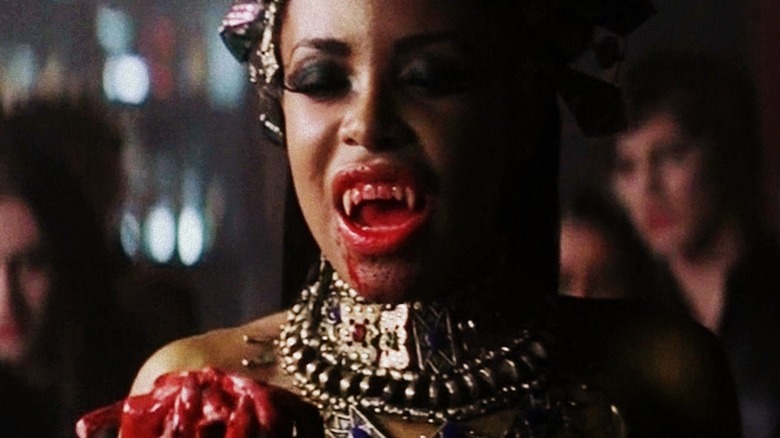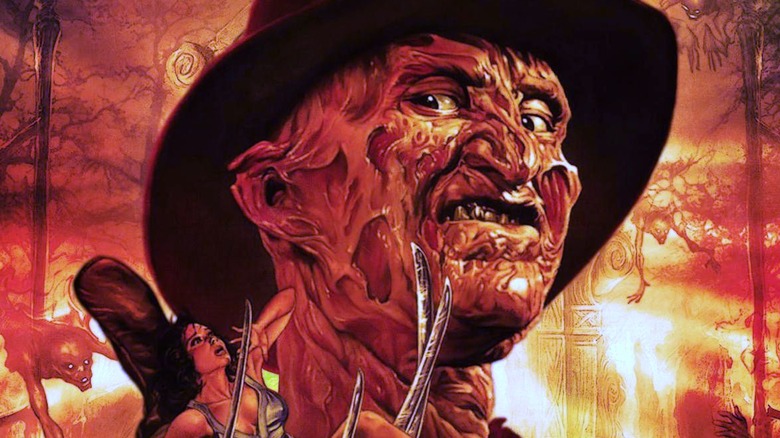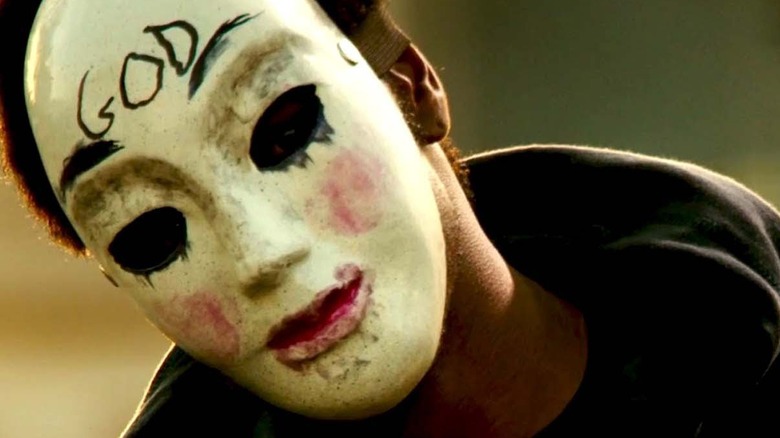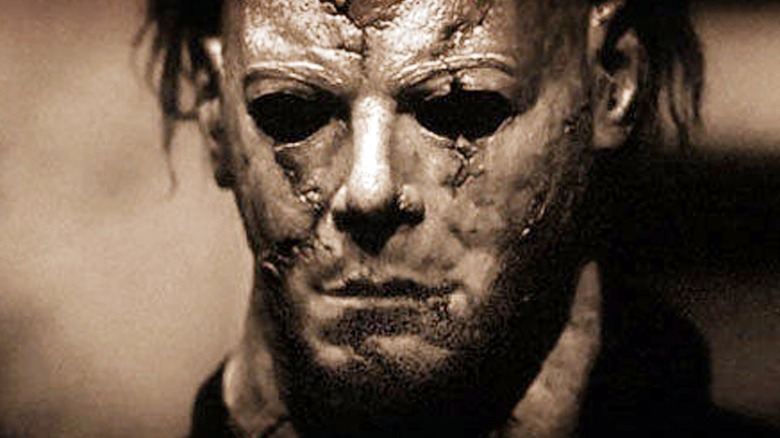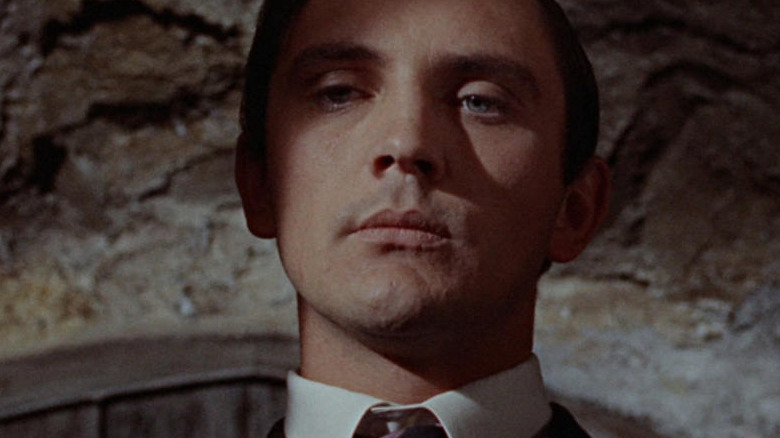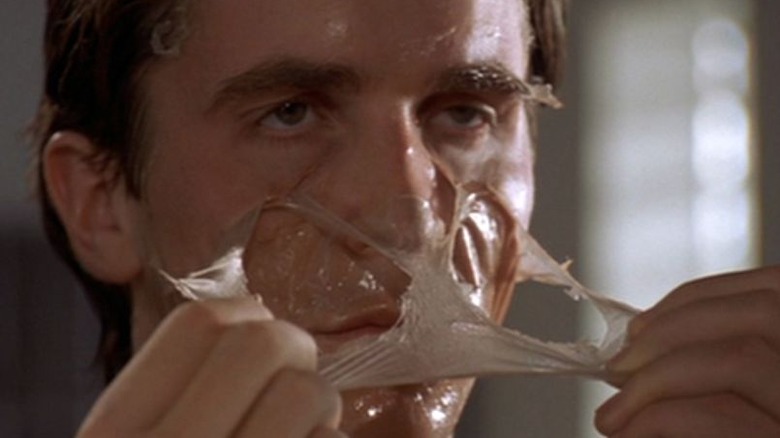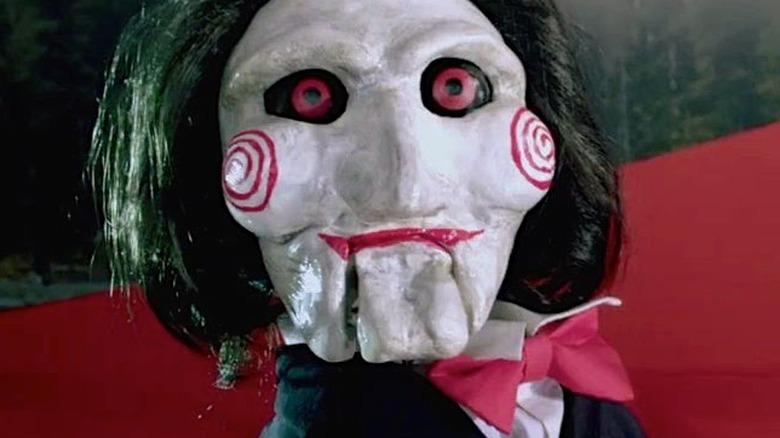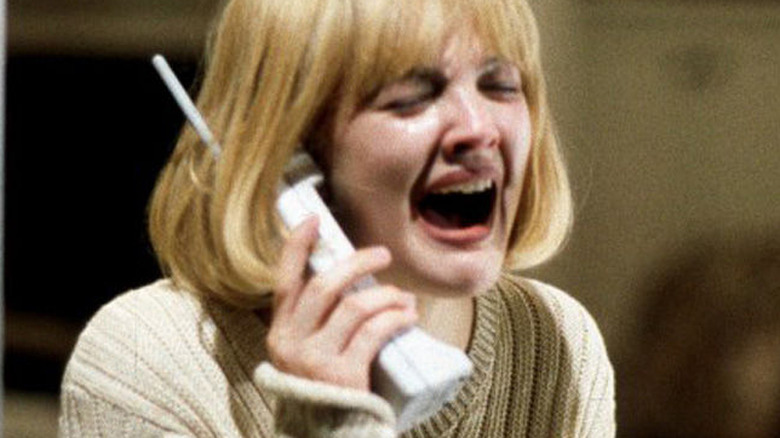Horror Movies That Became Real
Horror movies may not be for everyone (we're looking at you, guys and gals who get queasy at even the smallest drop of blood), but they're perennial favorites with a wide and diverse audience who beg for bigger, badder antagonists and ever scarier scenes. Unfortunately, some fans have taken their interest to the edges of sanity, committing dangerous and often deadly copycat crimes. Some slasher flicks center around real-life killers—but others have sparked everyday folk to commit violent acts against their friends, family, and even complete strangers. Here's the terrifying truth of just how common it is for horror movies to become real.
Queen of the Damned
Queen of the Damned, the screen translation of the third installment in novelist Anne Rice's The Vampire Chronicles, bombed with critics upon its release in 2002—and left the source material's creator disillusioned by the adaptation, pained to see her work "mutilated" by the director and creative team. But while it failed to resonate with critics, audiences, or author, it struck a chilling chord with at least one viewer.
In 2003, 22-year-old Allan Menzies stabbed his best friend, 21-year-old Thomas McKendrick, to death and drank his blood after McKendrick had allegedly made a remark insulting the film and its main character, a vampire named Akasha, played by the late singer-songwriter Aaliyah Haughton. During his trial, Menzies stated that he "snapped" after hearing McKendrick's comment, bludgeoning him with a hammer "at least 10 times" before stabbing him and eating part of his skull. Menzies confessed that he was obsessed with the film, having watched it more than 100 times, and was under the impression that he needed to kill someone in order to fulfill his dream of becoming immortal just like Akasha. "At the end of the day, I knew I would have to murder somebody anyway ... if you did not murder somebody you could not become a vampire," Menzies told the court.
Menzies reportedly offered to plead guilty to culpable homicide in the killing of McKendrick, but only on the grounds of diminished responsibility. This was rejected, and Menzies was charged with murder on a unanimous guilty verdict. Judge Roderick Macdonald called the attack "savage and merciless, involving gratuitous and sustained violence of a most horrific nature," and stated that Menzies was a highly dangerous man. In November 2004, it was reported that Menzies took his own life in custody at Shotts Prison near Glasgow, where he was serving a minimum sentence of 18 years.
Nightmare on Elm Street/Friday the 13th
Over the course of three days in September 2004, 26-year-old Daniel Gonzalez killed four people, driven to commit the gruesome acts of violence after he "fantasized about copying" Nightmare on Elm Street villain Freddy Krueger. Gonzalez's killings were completely random, and while carrying out his horrific acts, he wore a hockey mask—like the one worn by Friday the 13th franchise murderer Jason Voorhees. Gonzalez later stated in court that he had plans to murder "at least 10 people" in total and often dreamed of becoming a well-known serial killer like the fictional Krueger.
Gonzalez was sentenced to six life sentences and remanded to custody at Broadmoor Hospital, a maximum-security sanatorium in Berkshire, England. On August 9, 2007, nurses at found Gonzalez dead in a pool of his own blood. Reports indicate that his death was a suicide, and that he was considered to be suffering from schizophrenia and drug misuse in the time before the murders.
The Purge
Director James DeMonaco's 2013 dystopian chiller The Purge took audiences on a disturbing ride through an alternate world where for one night every year, all illegal acts, including murder, are decriminalized. Not only did the film spur a franchise, with follow-ups Anarchy and Election Year seeing releases in 2014 and 2016, but it also gave rise to the perhaps less-popular definition of what it means "to purge": to remove a group of people considered undesirable from an organization or place in an abrupt or violent manner.
That's exactly what Johnathan Cruz did in May of 2016 when he brought the fiction to the forefront of reality, murdering three people during a four-day killing spree. At the time, Cruz's motive was unclear, with officials believing that the acts of violence were nearly (if not entirely) baseless and indiscriminate. It was only when police interviewed his acquaintances that it was revealed he had previously discussed going on "a deadly crime rampage"—a "purge."
In the midst of his Purge-inspired murders, Cruz also allegedly committed a robbery. He was charged with three counts of murder, robbery, intimidation, and criminal gang enhancement. In April 2017, Cruz accepted a plea agreement that gave him three consecutive life sentences without the possibility of parole. Prosecutors dropped initial plans to seek the death penalty in exchange for Cruz pleading guilty to three counts of murder and the aforementioned armed robbery charge.
Halloween
After watching Rob Zombie's 2007 slasher Halloween, a remake of John Carpenter's 1978 classic, 17-year-old Jake Evans was inspired to follow in the footsteps of the fictional villain Michael Myers. In the terrifying film, Myers kills a bully, his older sister and her boyfriend, and his mother's boyfriend on Halloween; Evans, awash in a sick state of admiration and amazement at how calm Myers was during the murders, was overcome with the idea of killing his family members, believing it would be just as easy in real life as it was onscreen.
Evans shot and killed his 15-year-old sister Mallory and his 48-year-old mother Jami on October 3, 2012. Hours after his arrest, he penned a confession letter in which he admitted he had watched Halloween three times in the week leading up to the murders. "While watching it, I was amazed at how at ease the boy was during the murders and how little remorse he had," Evans wrote. "Afterward, I was thinking to myself it would be the same for me when I kill someone." According to his writings, Evans considered not killing Mallory and Jami, but decided to carry out the crimes anyway, as he felt his family was "suffocating" him. Police indicated that Evans put his copy of Halloween "back in the case" and "threw it in the trashcan so that people wouldn't think that it influenced [him] in any way."
In January 2013, Evans was sentenced to 45 years in prison, 21 and a half of which must be served before he can be considered for parole.
The Collector
The 1965 psychological crime thriller The Collector, based on the 1963 novel of the same name by John Fowles, is shadowed by a laundry list of real-life crimes. In the film's source material, a lonely young man named Frederick Clegg brightens his dreary days in solitude by collecting butterflies and staring wistfully at an art student named Miranda Grey, never making a move on her because he's far too socially inept. His admiration spirals into obsession when he purchases a large country home, fits it with an underground cellar, kidnaps Miranda, and forces her to live there until she falls in love with him. Unfortunately for Miranda, her plans to escape, seduce, and kill Frederick are thwarted. She ends up dead, and Frederick starts hunting for another beautiful brunette to add to his "collection."
Two men, Leonard Lake and Charles Ng, took Frederick's actions as a blueprint for their own twisted crimes. Lake abducted two teenagers in 1985 and kept his victims, Kathy Allen and Brenda O'Connor, trapped in a soundproof bunker, where he proceeded to rape, torture, and kill them. Lake was accompanied by his "associate" Ng, and the two men creepily referred to the abduction plot as "Operation Miranda." That same year, Lake committed suicide by ingesting a cyanide pill after being caught shoplifting. Ng was indicted on 12 counts of first-degree murder, which include the Allen and O'Connor killings. He's currently sitting on death row at San Quentin State Prison.
American Psycho
With a blatantly alarming title and an even more disturbing premise, American Psycho is one of the more "popular" movies upon which real-life evildoers have taken inspiration. Such was the case for Brian Douglas White, a 19-year-old man who chose murder over open communication following a messy breakup with his ex-girlfriend in 2012. The jilted lover, roused by Christian Bale's terrifying performance as American Psycho killer Patrick Bateman, used an axe—the same seen in the 2000 film—to murder his former girlfriend Desiree Staperfene's mother and new boyfriend. Angela Kim Staperfene, aged 46, and Jacob Lee Burns, just 19, were asleep at the time White killed them. Shortly before he killed, White posted on Facebook, "I like to dissect girls. Did I mention I'm insane?"—a line that echoes the "Did you know I'm utterly insane?" quote from American Psycho.
Reports indicate that Desiree was also home, though it's unclear whether White had intended to harm her as well. Thankfully, she managed to flee to safety and contact authorities. When police arrived at the Staperfene residence, they found White dead from from a self-inflicted gunshot wound. Authorities investigated the incident as a double murder-suicide.
Saw
And now we arrive at a franchise made synonymous with unnecessarily violent gore and gross-out sequences of slow killings: Saw. Matthew Tinling, a 25-year-old man living in London, was one fan of the series, and brought it to life in 2012 when he murdered his neighbor, 45-year-old Richard Hamilton. In what's been described as a "savage and prolonged act," a clear copycat torture scene from Saw, Tinling stabbed Hamilton repeatedly and then sliced through his spinal cord—exactly as shown in the movie. The motivation for the monstrous murder? Tinling wanted Hamilton to hand over the PIN for his bank account. Hamilton ultimately did, and Tinling withdrew £240 (about $311 USD) to spend on crack cocaine.
Investigators found a Saw VI DVD in Tinling's bedroom after his arrest, an object used during the trial to indicate that Tinling was a fan of the franchise and was motivated by the scenes of torture.
Tinling was jailed for life, set to serve a minimum term of 30 years. Judge Timothy Pontius handed down the sentence, telling him, "You inflicted 17 wounds during the attack, the most serious of which was delivered specifically with the intention of severing the spinal cord to cause paralysis and death, exactly as you had seen on a DVD. Whether or not that was in Saw VI, or another in the series, doesn't matter. It was something you had seen and tried to imitate."
Scream
Wes Craven's horror classic Scream inspired a slew of sequels—and at least one real-life crime. Thierry Jaradin, a 24-year-old man, lured 15-year-old schoolgirl Alisson Cambier into his Gerpinnes, Belgium home in 2001. Jaradin told Cambier, whom he'd previously befriended, that he wanted to talk with her and exchange some VHS tapes. When Jaradin made romantic advances toward the young Cambier, she rejected him and he brutally retaliated by excusing himself to another room, dressing up in a Ghostface mask (as seen in Scream), and stabbing Cambier more than 30 times. Jaradin allegedly placed her body on his bed, put a rose in her mouth, and called his father and a colleague to confess to the killing. Later, he admitted that the murder was premeditated and motivated by the events seen in Scream.
Officials have stated that nothing about Jaradin's past hints that he could have been capable of such an atrocity, as he had no criminal record or history of psychiatric afflictions. Jaradin was ultimately sentenced to life in prison.
Interview with the Vampire
In 1994, 25-year-old Daniel Sterling attempted to murder his girlfriend of eight years after the two watched Interview with the Vampire together.
On November 17, Sterling and 23-year-old Lisa Stellwagen headed to the theater to see the film, which chronicles two adult vampires turning a young girl (Kirsten Dunst's Claudia) into an immortal creature like them. In the early hours of November 18, Stellwagen woke up to find Sterling staring at her. When she asked what was wrong, he responded that he was going to kill her and "drink her blood." Stellwagen reportedly fell back asleep—why she wasn't immediately alarmed remains unclear—but Sterling carried out the crime later that day, stabbing her seven times in the chest and back after which he "drank her blood for several minutes." Though Stellwagen luckily survived, Sterling insisted he was innocent, adding, "I was influenced by the movie. I enjoyed the movie. But I cannot sit here and blame the movie."
Child's Play
A film that awakened an entire generation's fear of dolls, the 1988 supernatural slasher Child's Play centers around Chucky, a demonic figurine possessed by the soul of a deceased serial killer who commits multiple murders, often taunting his victims before he delivers the fatal blow, shot, or stab. Four years after the film debuted, 55-year-old Bernadette McNeilly and a group of her friends, referred to as a "drug-crazed gang," kidnapped, tortured, and murdered 16-year-old Suzanne Capper in what's known as one of Britain's most sadistic killings.
In December 1992, McNeilly kidnapped Capper, stripped her naked, forced her into a bathtub filled with disinfecting liquid, and made her listen to recordings of McNeilly imitating Chucky. As Cooper was subjected to McNeilly's tapes, which included phrases like "Chucky's coming to play," McNeilly's accomplices beat her, tied her to a bed, injected her with various drugs, and ripped out her front teeth. She later died after being dumped into a wooded area and subsequently set on fire.
McNeilly, along with three of her five nefarious associates, were handed life sentences. However, a High Court judge cut short McNeilly's minimum 25-year sentence in 2012. Three years later, in 2015, McNeilly was granted parole, with a prison report indicating that she was "full of remorse" and a "model prisoner." She's currently living under a new name in an undisclosed location in northwest England, but her former fellow inmates still consider her release to be inappropriate. One called it a "shocking blunder," and dubbed her "dangerous and manipulative." Another said of McNeilly, "No human being should have to breathe the same air as that animal... she wants people to feel sorry for her but she is dangerous."

